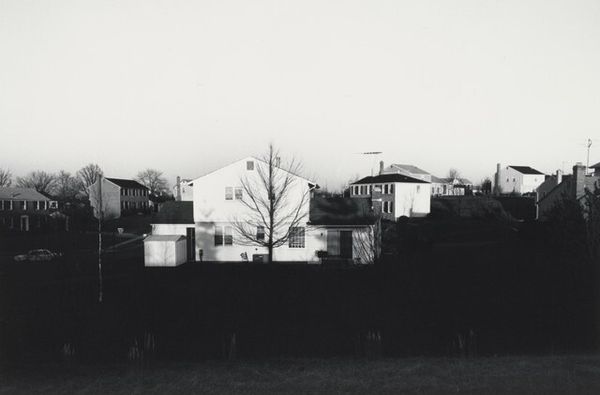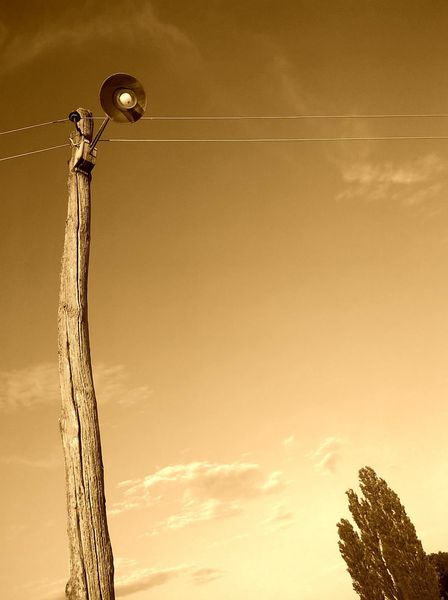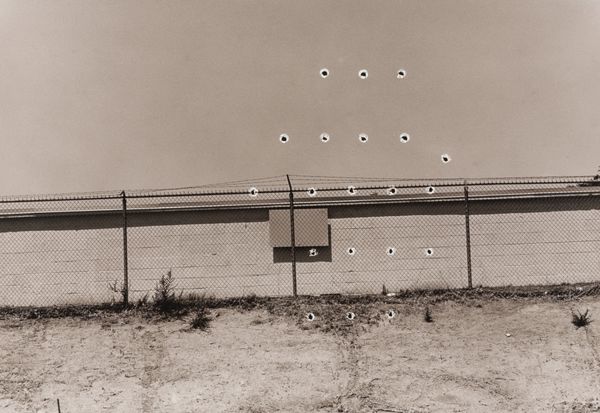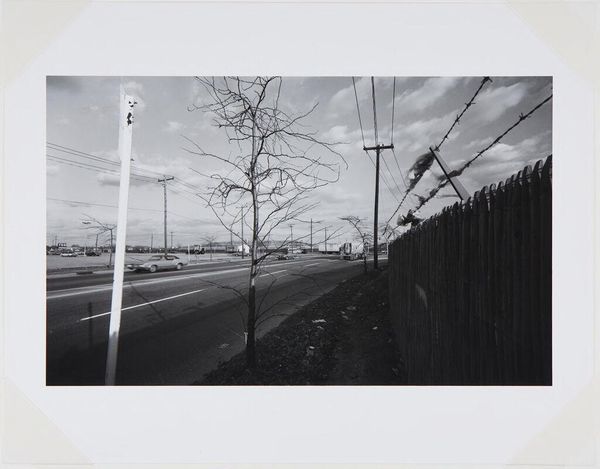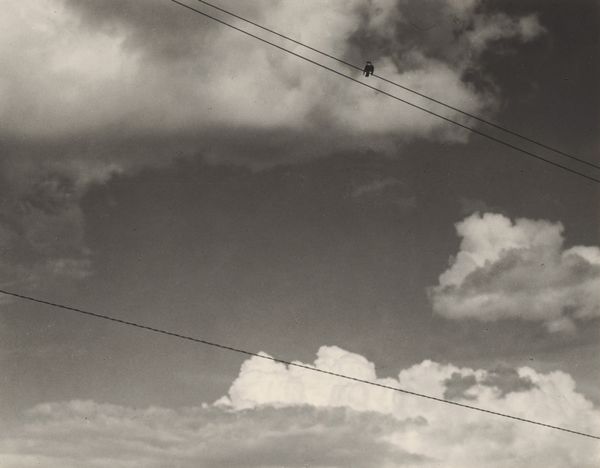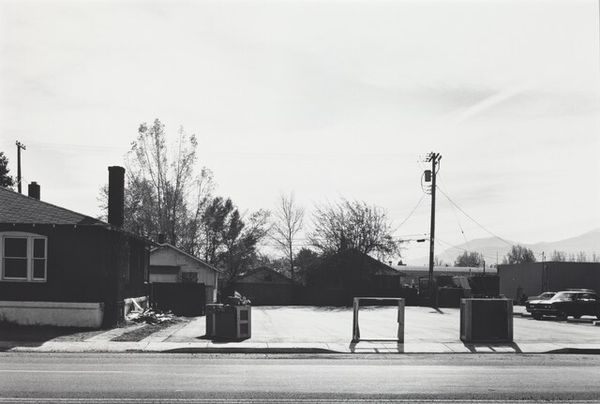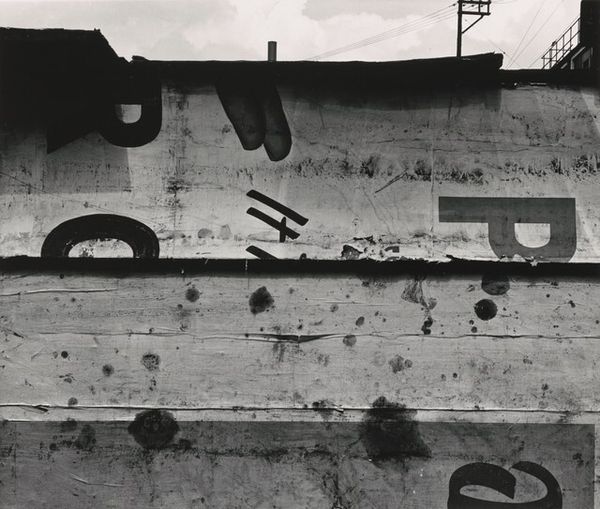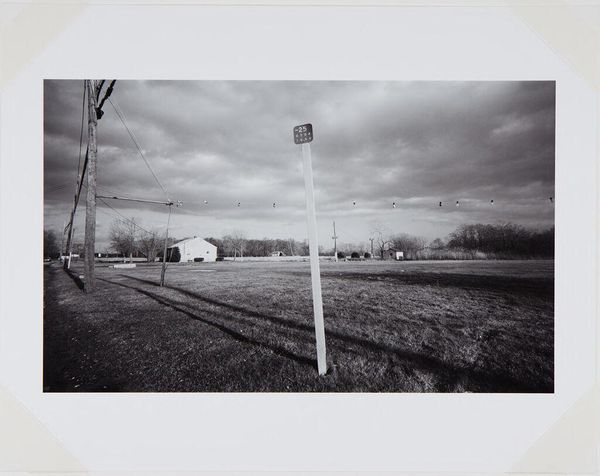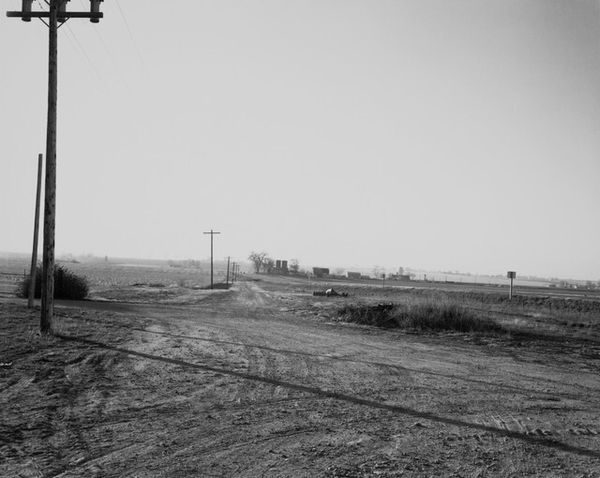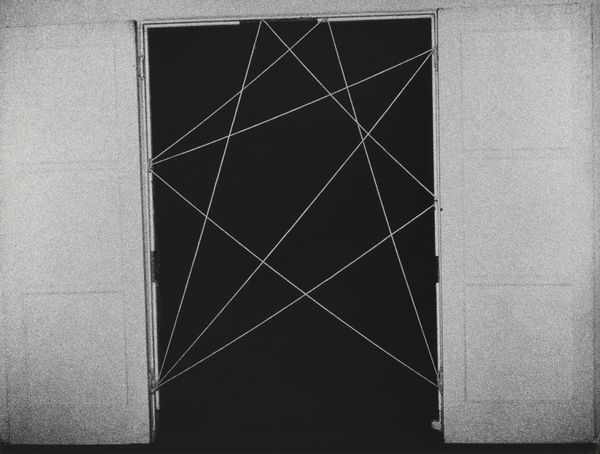![Power Poles [From the series Cancellations] by Thomas Barrow](/_next/image?url=https%3A%2F%2Fd2w8kbdekdi1gv.cloudfront.net%2FeyJidWNrZXQiOiAiYXJ0ZXJhLWltYWdlcy1idWNrZXQiLCAia2V5IjogImFydHdvcmtzL2VhMmViYjFjLTJlODMtNDYyYy1iZmVjLTE4MDNmNDdiODVjOC9lYTJlYmIxYy0yZTgzLTQ2MmMtYmZlYy0xODAzZjQ3Yjg1YzhfZnVsbC5qcGciLCAiZWRpdHMiOiB7InJlc2l6ZSI6IHsid2lkdGgiOiAxOTIwLCAiaGVpZ2h0IjogMTkyMCwgImZpdCI6ICJpbnNpZGUifX19&w=3840&q=75)
photography
#
conceptual-art
#
landscape
#
photography
#
outdoor scenery
#
monochrome photography
#
fog
#
skyscape
#
monochrome
Dimensions: overall: 27.6 x 35.2 cm (10 7/8 x 13 7/8 in.)
Copyright: National Gallery of Art: CC0 1.0
Editor: This photograph, "Power Poles" by Thomas Barrow, part of the "Cancellations" series, was taken between 1974 and 1978. It's a black and white landscape featuring, as the title suggests, power poles. What immediately strikes me is the harsh white lines intersecting the image. How do you interpret this work? Curator: Those harsh white lines, superimposed onto the photographic print, are key. They disrupt the pictorial space, creating a tension between the representation of the scene and the intervention of the artist. Observe how they interact with the receding perspective of the landscape, flattening the depth and calling attention to the surface of the photograph itself. Editor: So you're saying the focus is less on the scene and more on the… process? Curator: Precisely. The materiality of the photograph is brought to the forefront. Consider also the tonal range; the subtle gradations of grey versus the stark, almost brutal quality of the white lines. Barrow manipulates these elements to foreground the photograph as an object, a constructed image, rather than a transparent window onto the world. Editor: I see what you mean. It's as if the "cancellation" highlights the artificiality of the image. Curator: Yes. And it prompts us to question the nature of representation itself. The power poles, seemingly mundane objects, become part of a larger semiotic structure when viewed through the lens of Barrow's intervention. Do you see how the lines dissect and reframe the other elements within the composition? Editor: Definitely. It's a pretty self-aware piece. I hadn't considered how much the artist's intervention changed the reading of the work, pulling attention from the landscape. Curator: Indeed. It is an engagement with the language of photography itself. A productive visual strategy which prompts the viewer toward philosophical questions of form. Editor: Thank you, that was illuminating.
Comments
No comments
Be the first to comment and join the conversation on the ultimate creative platform.

